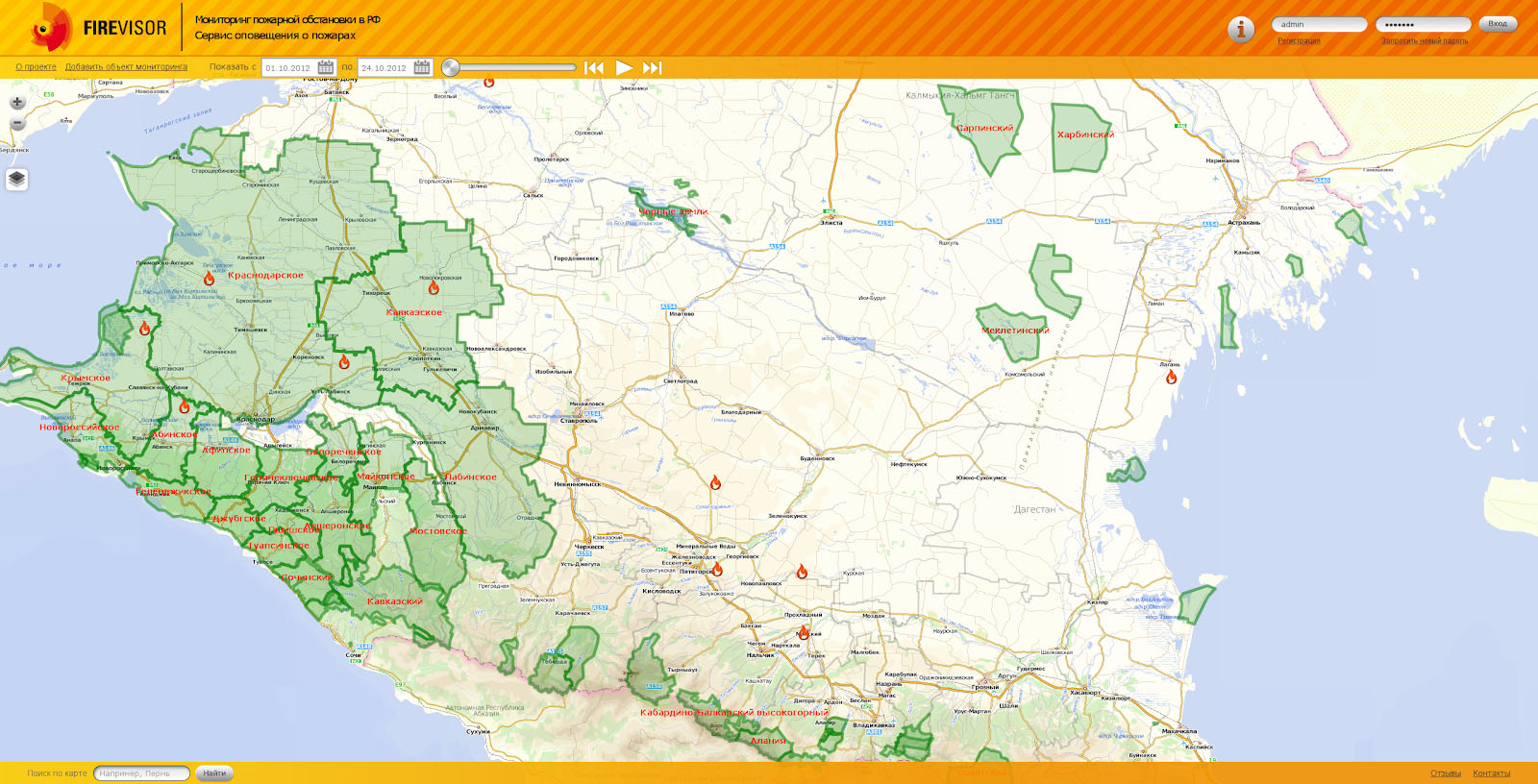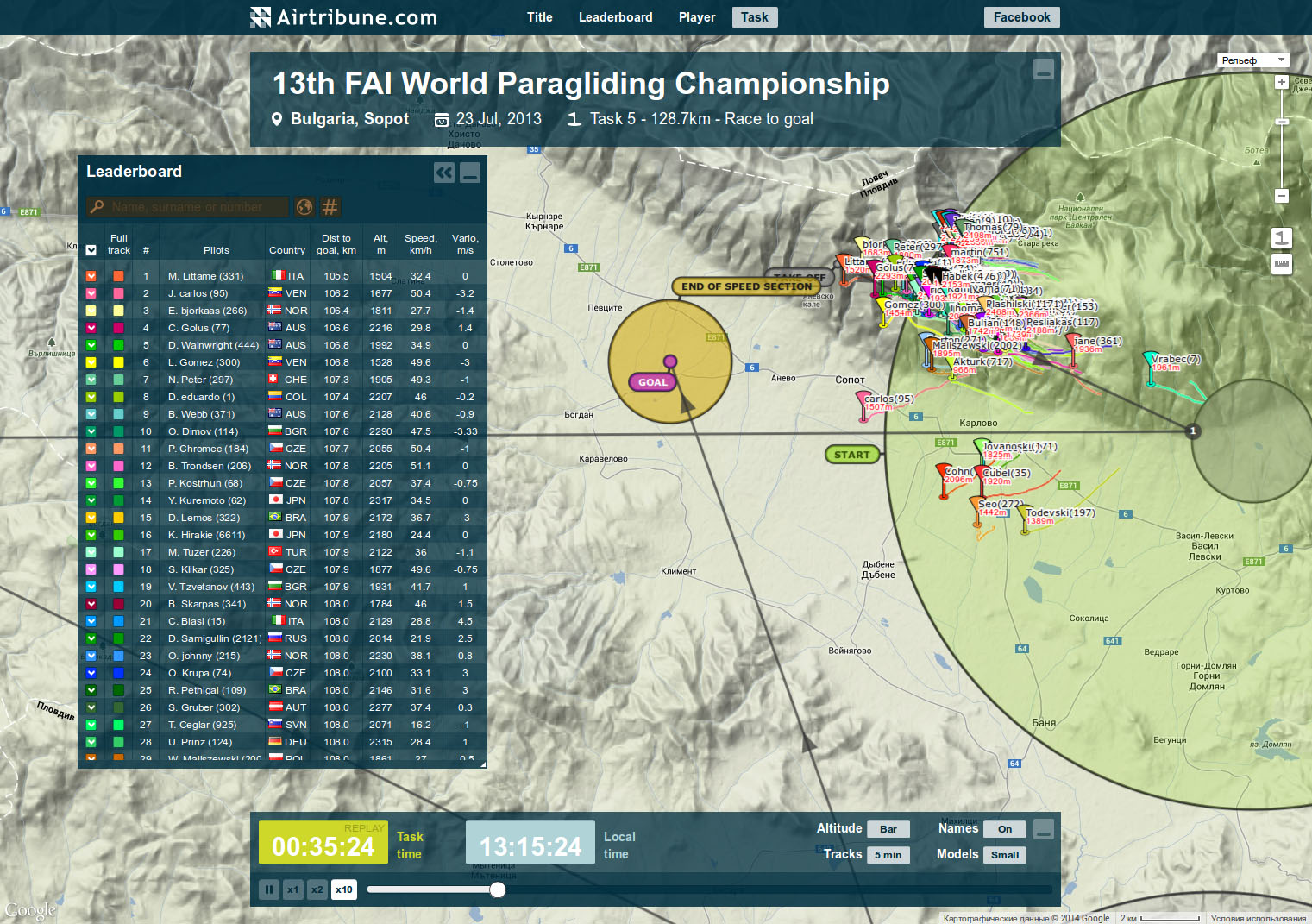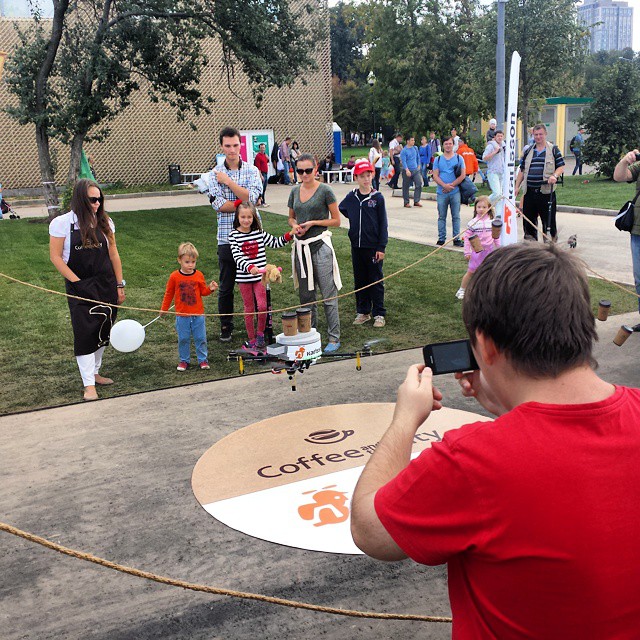Space imagery, aviation, coffee delivery - how to combine the love of the sky with IT

At the end of September, Dmitry Korolyov, one of the founders of TraceAir, flew from San Francisco to Moscow for the quarterly gathering of teams scattered between cities and countries. TraceAir develops a service for large construction projects, conducts surveys from UAVs, makes a photogrammetric model of the landscape, and with the help of analytical algorithms helps and advises how to build better. Projects include multibillion-dollar refineries and entire residential neighborhoods in Silicon Valley.
We made an appointment, and I confess, I got nervous. Big construction, a business in America, analytics and engineering - “probably serious uncles”, I think. I imagined that I would come to the office on top of a business high-rise building, with panoramic windows in the floor, a long table for meetings in the middle. And there I will meet there a cinema boss in a suit for 4 thousand dollars, sternly and purposefully looking at the anthill under his feet.
')
In order to somehow match, I dug out in the closet old trousers from a wedding, leather shoes, a decent shirt. For the first time in my life, everything has been done in the morning. He came to the address and saw what he was expecting - a street with tall hotels, black Mercedes wedged into the territory one by one, and men in pea jackets squeeze at barriers from the cold.
And I'm not sure that I was ready for this level.
Amidst chic and glitter, when I finally found the body I needed, a thin guy with hair below his ears, slippers on his bare feet, sweatpants, a down vest and large headphones around his neck opened the door to me.
- Hi, I'm Dima.

He led me to a cozy house, littered with traces of a recent party. On the table there are not enough snacks, under the table there are hastily drunk beer cans. At the top of the shelf with strong alcohol - these are usually put up for beauty, and only at the wildest parties, late at night, they begin to uncork the bottles one by one. Sofas, chairs, toys, photos pasted around the circle, a lively mess - not a trace of corporate rigor.

And here I stand, among the usual IT guys, dressed up like a dandy. The first thing I wanted to ask was if they could find any belongings more comfortable. But we already had something to discuss.

Dima, as it turned out, was a former fizfakovets, one of those boys who sent letters to the Hacker magazine to assemble a team of burglars. He is also a professional paraglider. His love for IT and the sky led him to aerial surveys and complex engineering services. But the road to construction was a long one, he went through the boom of drones, when it seemed that the drones-couriers would flood the entire airspace of the capitals.
I asked Dima about drones, he willingly told, but as it turned out, he was much more sick with construction. Therefore, it seemed to me correct to break our conversation into two articles.
In this one - how drones tried to spread coffee across parks.
In the second - how dump trucks knead the soil under the supervision of analyzing drones.
- I actively flew a paraglider, participated in competitions. And after fizfaka began to think how to combine a paraglider and IT. A friend introduced me to the company ScanEx, which was engaged in the processing of satellite imagery. I put together a team and started doing all sorts of things for them: the control of illegal logging on the basis of images, the firewall - by analyzing the IR images highlighted where there were any fires.

Then we realized that in our paragliding there is not enough visualization. We fly, and people do not understand how we compete at all.
- I now do not really understand how.
It's like a rally - you have a route where you need to take a few control points. You take off, fly conditional 100 km. There is no motor, and you have to look for ascending air currents. Fly from one to another until you reach the finish line. Who is the first, that fellow.

But this race is in the air, and no one from the ground understands it. Paragliders took off, flew away and everything - silence. And we wanted to visualize it all. Give everyone a GSM-GPS tracker and broadcast a picture on the web. At that time, various three-dimensional engines were just emerging, and we visualized everything in 3D and 2D.

The service took off quite well, was used in a bunch of competitions, and it is still alive. The only problem - there was no money. Aviation sport is a little party sick of heaven, but they don’t want to spend money on it. This is not tennis.

- Although it does not sound like a sport for the poor.
Well, it really is not a sport for the poor. But the service for him just does not pull on the venture history. And we wanted to make a sports tracker for everything. It is clear that this was the first startup where we stuffed bumps. But then a team was formed, part of which is now in TraceAir.
I wanted to stay in aviation and in IT. And at that moment the boom of drones began. I decided to try to do the drones delivery service alone. We wrote down everything at all - our own drones, which automatically fly, are controlled via the Internet, automatically land on landing stations.
Before starting, Dmitry and the team wrote a simulation of the delivery of goods by a swarm of drones throughout Moscow .
- It was before the Amazon?
Amazon then only announced this. And we already thought about how to make wireless charging stations, considered that Moscow could be covered with forty stations, we figured out where orders would come from. We launched a pilot project in Gorky Park - tried to make a delivery of coffee. The barista puts a glass on the drone, presses a button in the mobile phone, the drone flies away to the order point, lands - there the dude picks up his coffee and sends the drone back to the barista via the mobile phone.

- I read a month ago that IBM patented emotion recognition technology on drones for delivering coffee. Allegedly, they analyze the crowd, see that you are sleepy, and begin to pester you with coffee.
- Yes, yes, we really neighing about it. In general, all these stories with patents - just for fun. And then it was 2014, there were still no problems with flights - I don’t want to fly, everyone doesn’t care. We were more and more deeply involved in some fictional technological problems, and didn’t touch business at all. It was like a model aircraft design team, and the developers came to us to work for the soul. For example, Sasha Solovyov came to us from Aplana when he learned that it was necessary to register an automatic landing for drones.
At this time we were fed by our other team, which was engaged in outsourcing. She was headed by Masha Khokhlova - now she is the head of product at TraceAir - well, she is a real physicist and, in addition to laser physics, she was engaged, for example, in developing scientific software for the University of Seattle, for Stanford. But I constantly pulled Masha to give us free programmers. As a result, we continued all the loot on these technological toys.
The owner of the coffee shop said, let's put another station on the Sparrow Hills. It was calculated how much the delivery expansion would cost, and the owner of the coffee house would say, “You know, I’ll stay with ordinary couriers.” So it all stopped.
- What do you think, if he gave you any money to develop - would you take it out?
The problem with drones is more technological than business. All before the first severed fingers. We need to think about how the drone will land safely, take off safely. Suddenly, the child will reach out to him, the dog will run up, the weather will deteriorate, the battery will sit down. Especially these problems take place in the urban environment. In America, it is much simpler; there, at least, drones can deliver things on the front lawn.
It was funny when in 2016 in Hawaii I met a guy from Amazon. He was just doing history delivery. We chatted very well. I told you how we did, and he is so "cool." And then I asked how they were doing with the delivery. He to me: "do not even ask." He says there are a lot of problems everywhere - with control, with batteries, with the stability of the system as a whole.
- I heard that the drones are now rested against the ceiling because of the batteries. It requires a serious breakthrough in the energy sector in order to have decent results.
Yes, ordinary lithium-ion and lithium-polymer batteries - it's only half an hour to fly by. You can pervert, put more batteries, but then the weight will increase, and everything will come to naught. Batteries like lithium-air, of course, will help, but when it will be - it is not clear.
Another option is all sorts of fuel cells on hydrogen and so on, which now seem to be developing well. But they require more mass, more complex operation, more expensive recharging. But fly longer. On the other hand, if you set up many stations between which the drone can jump on a regular battery, this will also be normal.
Lithium-air fuel cells
Lithium-air power sources are among the most promising candidates for replacing classic lithium-ion batteries. They form lithium peroxide and theoretically can produce a specific energy of 40 megajoules per kilogram. While this is the largest indicator of all - it is five times larger than that of lithium-ion.
The problem is that it is only in theory. There is no real working sample that can be applied in practice. Lithium-air elements cannot work in our atmosphere due to its chemical composition.
The ingress of nitrogen and carbon dioxide into the system makes it explosive, plus the battery is lost in 10–20 recharge cycles. Now researchers are looking for a way to protect the system from the influence of the atmosphere, selecting various elements for cathodes and anodes.
One of the prototypes, developed at the University of Illinois, withstands 700 cycles without significant loss of capacity, but this does not yet meet the performance of lithium-ion batteries.
In fact, there is a set of problems here - safety, navigation, a lot of everything. There should be a normal bunch of flight control systems. Conventionally, you founded a startup, and I founded a startup, and we both fly in Gorky Park. Sooner or later our drones will collide.
Until we come up with some kind of system, where all the drones see each other and change the routes themselves - it will. And the next step is to control all general airspace. In low-flying manned vehicles - gliders, helicopters, etc. - all fly according to Visual Flight Rules. They see each other and disperse according to their rules - left sides, low-priority priority and so on.
But if you do not see the drone online, or the drone does not see someone online - sooner or later there will be a collision. Therefore, there are enough technological problems. Until the delivery of drones, there are at least five years
Not too optimistic?
Well, yes, when we started 2014, we also said that for about five years. And already four has passed. In general, not only did we continue all the loot then, but the ruble ... fell.
For the rest of the money, we decided to go to the Valley and study, as with the drones there. But the people said right away - the drones themselves were already all zadolbali, we need to do services for drones. Something serious - for agricultural or construction.
What will happen next
The entire second part of the article I'm working on is about a big construction site, despite the big money stuck in the 80s and almost untouched by the IT sphere.
While I pulled out several quotes from a huge interview, I collected a provocative teaser out of them:
Are you bored with building now?
Construction is the most fucking and romantic thing that can only be.
Engineers tell us, "guys, this seems to be a licensed activity." And we say, "Go on dick, we have software." Well, something serious begins. California engineers are driving us a barrel.
All these geological things your developers need to know?
Developers are accustomed to knowing nothing at all. What the manager said to them is what they are doing.
When the UX-er sees how a small laptop with a dusty touchpad uses its interface, it’s like this: “what would I have done ****!”
We shoved the GPS trackers into real scrappers and watched them drive to tweak the real characteristics of our model. As they drive in denser ground, as in loosened soil, everything is taken into account.
Did you choose a construction site because there was money in it?
- And lift so that the contractor gave more money.
- Dude, what are you - fucked up?
If you are a startup and no one has judged you - most likely you are not doing any revolution in your area.
Separate greetings to Roskomnadzor. When this n **** happened, we suffered more. I wanted to come and all ... with fire and sword!
I will finish and lay out next week, do not go far.
Source: https://habr.com/ru/post/425801/
All Articles